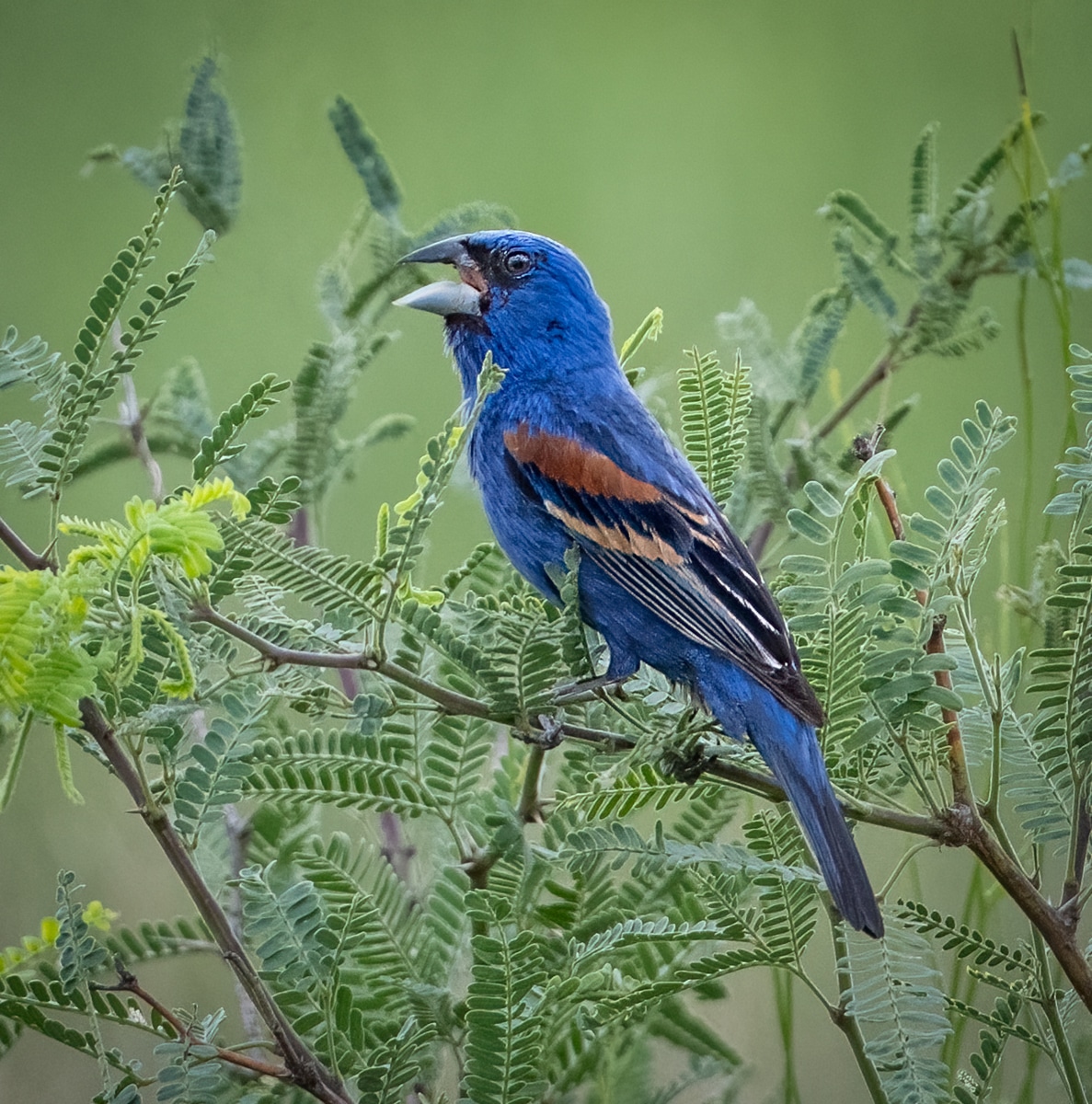
The occurrence of the color blue in bird plumage has always fascinated scientists and bird enthusiasts alike. Despite being a very prominent color on our planet, blue is very rare in nature. Less than one in ten plants have blue flowers and even fewer animals are blue. So how does this color occur in birds?
In plants, when the color blue occurs it is due to the mixing of yellow and green pigments, as an artist would mix paints on their palette. The only known animals to produce a true-blue pigment naturally are a genus of butterfly called Nessaea, whose metabolic processes create pterobilin, a blue bile pigment. Yet there are many examples of blue birds that many of us see on a daily basis. It is the word “see” that is intrinsic here.
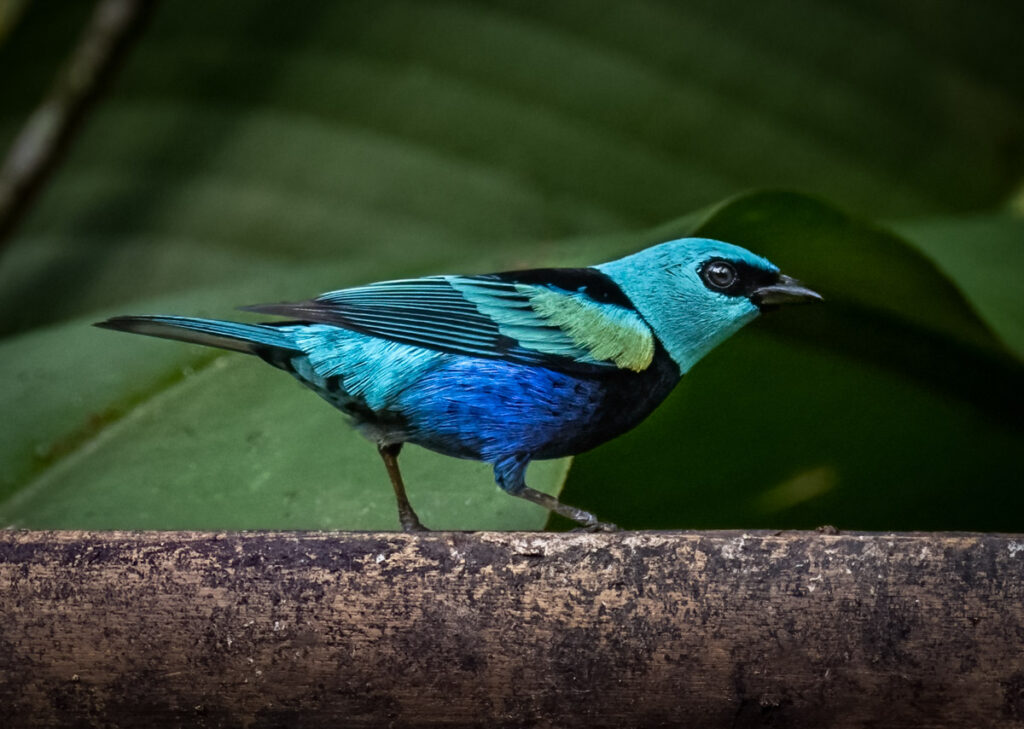
The feathers of a bird’s plumage are composed of a protein called keratin, which gives them strength and flexibility. The color of these feathers is not determined by the keratin itself but by the presence of pigments that the bird absorbs from their food: the most famous example are flamingos, who are pink because of the carotenoid pigments they get from eating shrimp. But as we heard above, as there is no true-blue pigment in plants, birds can’t turn blue through food. Instead, something else gives them this striking and captivating hue— structural coloration.
The feathers of blue birds contain tiny structures called melanin rods, which are arranged in such a way as to cause an interference of light waves. This interference results in the absorption of most wavelengths of white light, but the reflection of blue light. So, when we look at birds whose feathers have this structure, our eyes perceive these birds as blue.
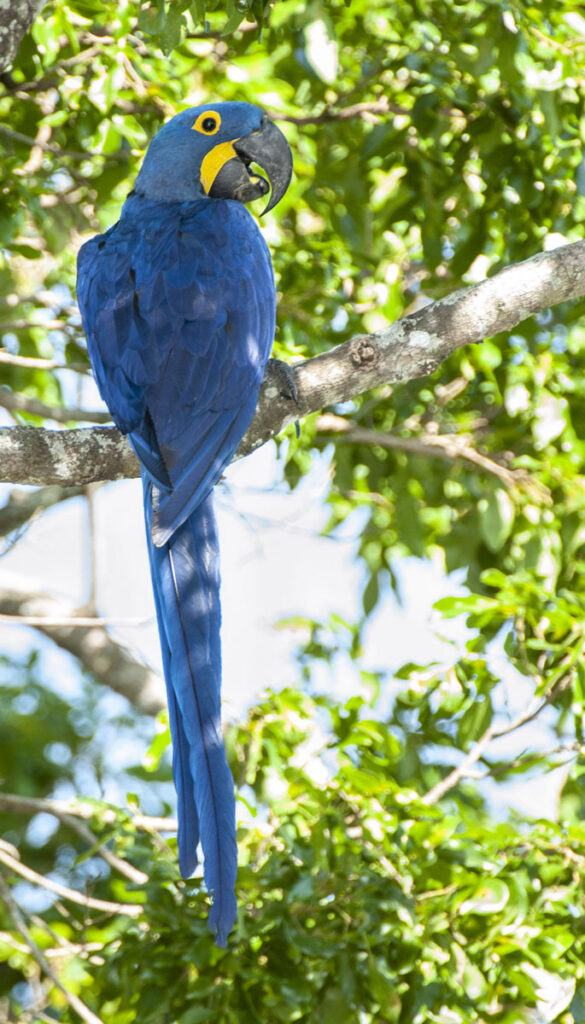
The hyacinth macaw is a prime example of a bird species that displays structural coloration. These beautiful birds are the largest flying parrot species in the world and can be found in the forests of South America. Known for their vivid blue feathers, they are so highly prized that they have been the frequent victims of illegal poaching, and their numbers dropped perilously low in the 1990s, to around 3,000 individuals. Nowadays, they are still vulnerable, but their numbers have stabilised. What makes these birds’ blue feathers perhaps even more striking is that they also contain a small amount of melanin as the first layer in their feathers, underneath which lie tiny pockets of air bubbles that reflect the blue light back through. This also gives the feathers dark edges, reinforcing that deep hue to our eyes.
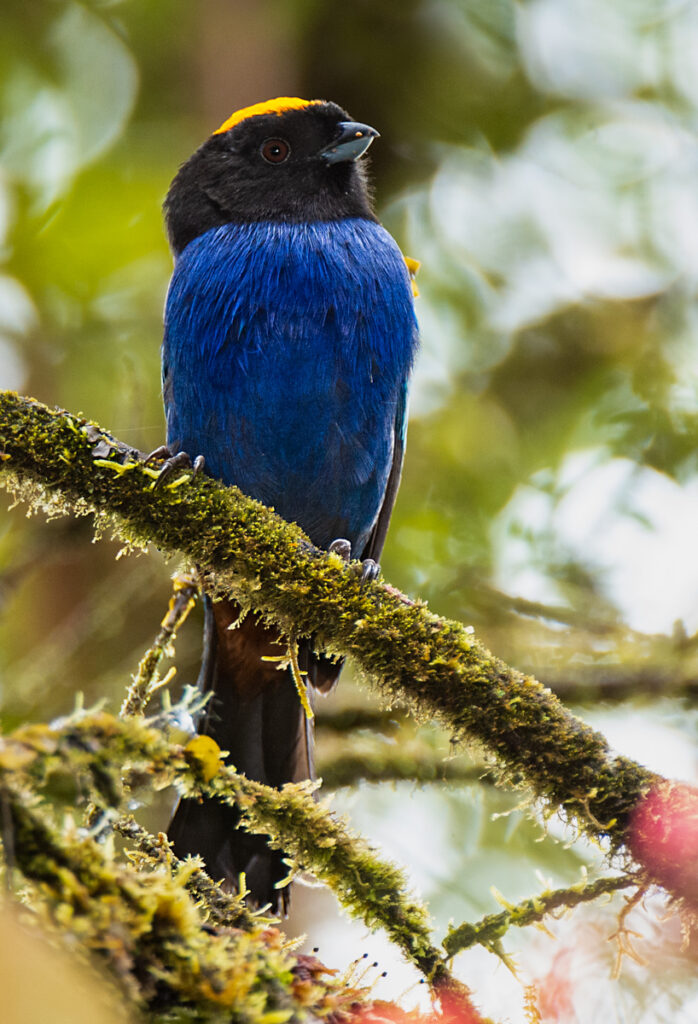
The golden-crowned tanager is a small, captivating bird found in the Andes mountain range. The blue color of this distinctive tanager is different to the hyacinth macaw in that the tanager’s feathers lack that layer of melanin, therefore the color you see here is entirely dependent on the physical structure of the feathers scattering light. Despite this, the deep cobalt blue is achieved because of the distinct alignment of the feather’s cells, and is beautifully accentuated by that black head topped in a bright yellow cap.
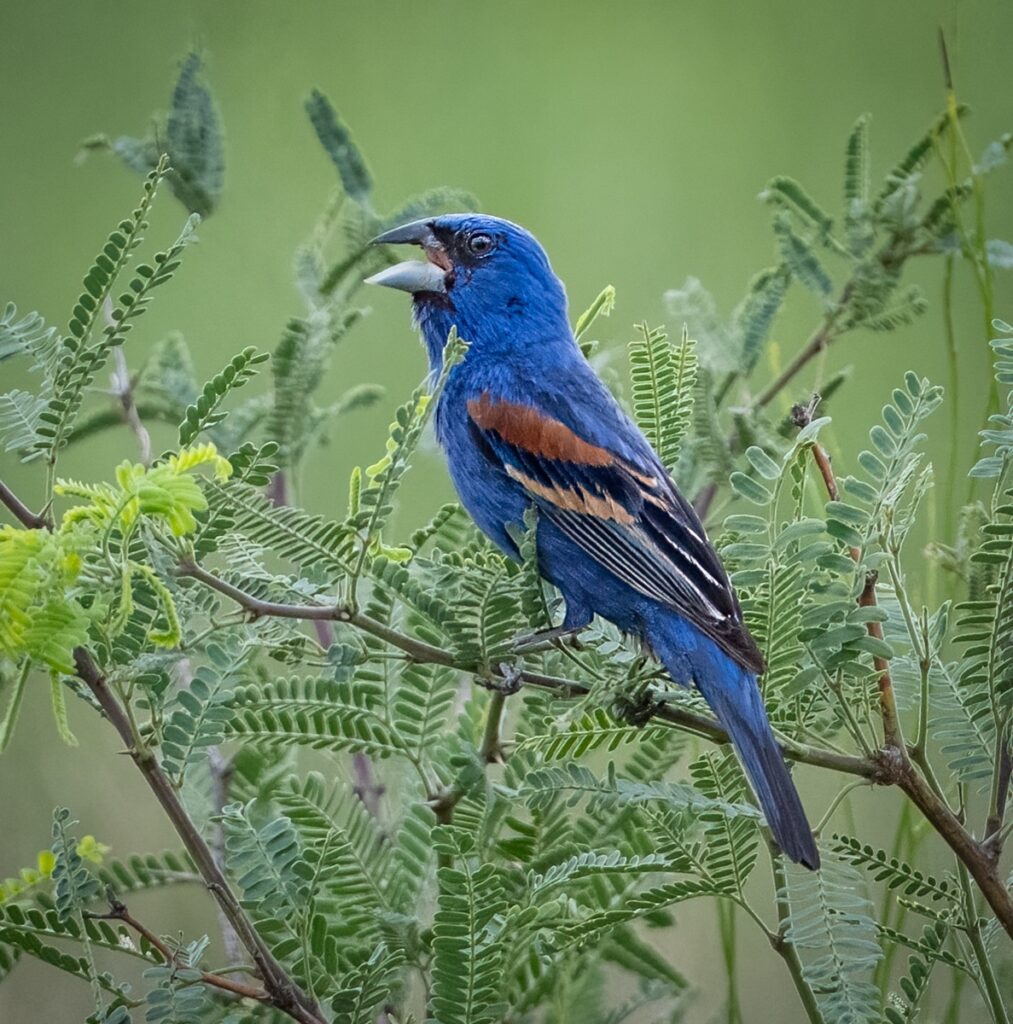
The Latin name for the common North American bird, the blue grosbeak, is Passerina caerulea, and that second word is Latin for azure-, sky- or dark-blue, giving you a good sense of how differently this bird can be perceived depending on your viewpoint and where the light hits it. That variation is structurally affected as with all blue birds, but blue grosbeaks also have other feathers throughout their plumage which do contain carotenoid pigments, responsible for the blacks, browns, even yellows and oranges in their wing bars and other back feathers that beautifully clash against the structural blue we see when the bird moves.
These species are just a handful of some of the most stunning blue birds we can find in the world, but each will differ to some degree in the mechanisms involved as to how that amazing, rich color literally shines through. But still, all of this information poses the question – is the bird still blue if we don’t look at it?


